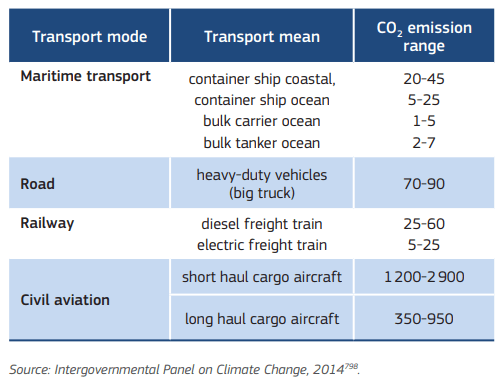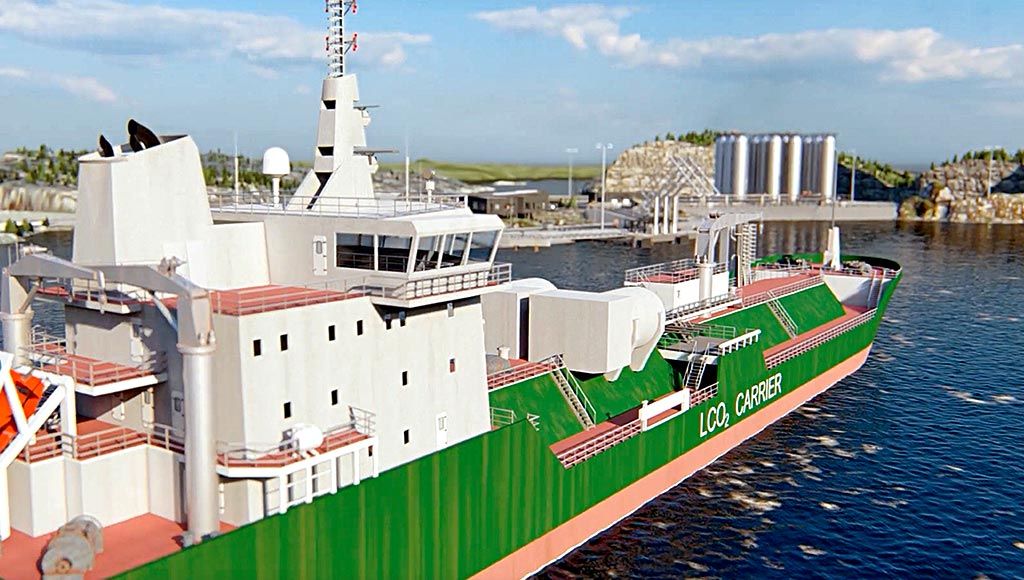Shipping is the most carbon-efficient mode of transport, with the lowest carbon dioxide (CO2) emissions per distance and weight carried.
According to a report published by the European Commission, international shipping accounts for less than 3% of annual global CO2 and produces fewer exhaust gas emissions (including nitrogen oxides, hydrocarbons, carbon monoxide and sulfur dioxide) for every ton transported per kilometer than road or air transport.
However, the same report indicates that given the importance of maritime transport and the prospects for increased maritime transport, it is essential that the industry continue to reduce its environmental impact.
CO2 emissions range per tonne-kilometre for freight. In g CO2/km
Due to the expected growth of the global economy and the associated transport demand from global trade, greenhouse gas emissions from shipping could grow by 50-250% by 2050 if no action is taken, so it is critical that the industry continues to improve the energy efficiency of ships and switch to alternative fuels.
Most of the goods transported within and outside the European Union are shipped by sea.
CO2
Maritime transport plays a key role in the economy and trade of the European Union, and it is estimated that it represents around 80% of world freight transport and a third of trade within that bloc.
In addition, almost 420 million passengers on board cruise ships and ferries embark and disembark in ports of the European Union in 2019, this is 1.8% more than the previous year.
In 2019, the total weight of goods transported to/from the main EU-27 ports by short sea shipping (excluding cargo movement across oceans, deep sea shipping) was 1.8 billion tonnes .
For the purposes of this report, maritime transport includes the following subsectors: passenger transport: maritime and coastal passenger transport by water and fluvial passenger transport by water; freight transport: maritime and coastal freight transport by water and inland freight transport by water; and transportation services: rental and leasing of water transportation equipment.
Overall, shipping accounted for 9% of jobs, 19% of Gross Value Added and 25% of profits in the European Union’s blue economy in 2019. The sector appears to have recovered from the 2016 slump.
![]()

